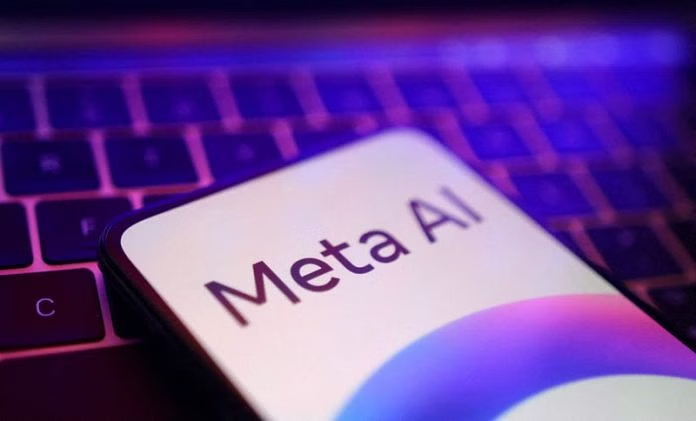A groundbreaking move that is set to shake up the AI industry, Meta has introduced an innovative artificial intelligence model capable of generating videos with synchronized audio. This announcement not only signifies a significant leap in AI capabilities but also positions Meta as a formidable contender in the AI space, challenging established players like OpenAI.
This development holds immense potential for various sectors, including content creation, entertainment, marketing, and more. As the race for AI dominance intensifies, Meta’s new model could be a game-changer, paving the way for a future where AI-generated content is indistinguishable from human-made media.
Meta’s Latest AI Breakthrough:
Meta’s new AI model is designed to produce high-quality video content with synchronized audio, a feature that has long been a challenging aspect of AI video generation. Previous models were limited in their ability to align visuals with sound accurately, often resulting in disjointed outputs. Meta’s latest innovation addresses these issues, demonstrating a nuanced understanding of visual and auditory elements to produce coherent and engaging multimedia content.
One of the standout features of this model is its ability to generate videos that reflect real-world scenarios with remarkable fidelity. The model leverages advanced machine learning techniques, including generative adversarial networks (GANs) and transformer architectures, to achieve this feat. It can create realistic animations, complex scenes, and even produce accurate lip-syncing, making it a versatile tool for creators and businesses alike.
The Competitive Landscape:
Meta’s announcement comes at a time when the AI industry is witnessing rapid advancements and heightened competition. OpenAI, known for its popular language models like GPT-4, has been a dominant force in the AI research community. However, its focus has largely been on text-based applications, such as chatbots, content generation, and coding assistance.
With its new model, Meta is branching out into a less explored domain—video and audio synthesis—where the barriers to entry are significantly higher due to the complexities involved in generating and synchronizing multimodal content. This move positions Meta as a direct competitor to OpenAI, signaling its intent to capture a larger share of the AI market.
Technical Insights and Advancements
Meta’s AI model is built on a sophisticated framework that incorporates deep learning algorithms and a multimodal approach to content generation. By training the model on vast datasets comprising images, videos, and sound clips, Meta has enabled it to understand context, timing, and transitions effectively.
The use of multimodal neural networks allows the AI to interpret and generate content that involves multiple sensory inputs, much like how humans perceive the world. This results in outputs that are more natural and contextually appropriate. For example, the model can generate a video of a person speaking, complete with synchronized lip movements, background sounds, and ambient noises that match the setting.
Additionally, Meta has introduced a novel loss function in the training process, which ensures that the generated audio is perfectly aligned with the visual content. This function evaluates the consistency between the audio and visual components, refining the model’s ability to produce seamless multimedia content.
Potential Applications and Implications:
The ability to generate high-quality videos with sound opens up a plethora of possibilities for various industries. Content creators can leverage this technology to produce videos quickly and cost-effectively, eliminating the need for extensive production resources. This could revolutionize platforms like YouTube, TikTok, and Instagram, where video content reigns supreme.
In the realm of marketing and advertising, brands could use Meta’s AI model to create personalized video campaigns at scale. By automating the process of video generation, companies can tailor their messages to different demographics and regions, optimizing engagement and conversion rates.
The entertainment industry could also benefit from this technology, as it allows for the creation of animated content, dubbing, and even realistic digital characters. This could potentially reduce production costs and time, enabling studios to bring creative ideas to life more efficiently.
Ethical Considerations and Challenges
While the advancements in AI video generation are impressive, they also raise several ethical concerns. The potential misuse of such technology for creating fakes, misleading content, or misinformation is a significant risk that needs to be addressed.
Meta has emphasized its commitment to developing safeguards and ethical guidelines to prevent the misuse of its AI model. The company is working on implementing watermarking techniques, content verification methods, and partnerships with regulatory bodies to ensure responsible usage.
However, the challenge of monitoring and regulating AI-generated content remains. As the technology becomes more sophisticated, distinguishing between real and AI-generated media could become increasingly difficult, making it crucial for tech companies, policymakers, and society to collaborate on establishing clear ethical standards.
Meta’s Strategy and Vision:
Meta’s foray into AI video generation is part of its broader strategy to integrate advanced AI capabilities into its suite of products and services. The company envisions a future where AI plays a central role in content creation, virtual interactions, and augmented reality experiences.
By investing in cutting-edge AI research and development, Meta aims to build a comprehensive ecosystem that spans various applications, from social media and advertising to virtual reality and the metaverse. This strategy aligns with Meta’s long-term vision of becoming a leader in immersive technologies and AI-driven innovation.
What This Means for the Future of AI:
Meta’s new AI model represents a significant step forward in the evolution of artificial intelligence. The ability to generate videos with synchronized audio could set a new benchmark for AI content generation, pushing the boundaries of what is possible.
As more companies enter the AI race, the industry is likely to witness a surge in innovation and competition. This will drive the development of more advanced models, better algorithms, and new use cases that could transform how we interact with digital content.
AFRIPOPULA

